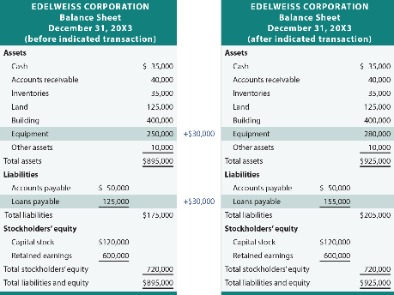These figures are typically included in financial statements such as the Balance Sheet and Cash Flow Statement, providing insights into a company’s liquidity position. Interest expense is the amount a company pays in interest on its loans when it borrows from sources like banks to buy property or equipment. If interest rates stay at or near zero percent for a long stretch of time, it could result in a prolonged, perhaps severe, drop in the profits of the insurance industry as a whole. As a result, the price-to-earnings ratios of many insurance companies are higher than they appear. You can find what you’re looking for in a section of the company’s income statement that contains two line items called “interest income” and “interest expense.”

A positive net income indicates profitability while negative net income means losses were incurred. You can also find this information on the company debt schedule, which should outline all of the business’s debts along with their balances and interest rates. Capital leases are the exception because you’re leasing an asset rather than borrowing money.
Does Accounts Payable Go On The Income Statement?
Interest income can be very small, or even close to nothing for some companies. For others, such as banks and insurance underwriters, it is of huge value. Property and casualty insurance companies invest a large portion of their book value or other cash assets into types of funds that will earn interest on a steady basis, such as Does Payable Interest Go On An Income Statement? high-yield bonds. It’s also important to note that interest expense can be calculated on a monthly, quarterly, or annual basis, depending on the terms of the loan or credit agreement. Additionally, some loans may have a variable interest rate that fluctuates over time, in that case the interest expense will change accordingly.
- The company is required to pay each month’s interest on the 15th day of the following month.
- A small cloud-based software business borrows $5000 on December 15, 2017 to buy new computer equipment.
- Accounts Payable is a crucial component of any business’s financial management.
- For example, XYZ Company issued 12% bonds on January 1, 2017 for $860,652 with a maturity value of $800,000.
- It then pays the interest, which brings the balance in the interest payable account to zero.
- The $1,000 of interest incurred during December is to be paid on January 15.
Only businesses like banks could consider interest expense directly part of their operations. A small cloud-based software business takes out a $100,000 loan on June 1 to buy a new office space for their expanding team. The loan has 5% interest yearly and monthly interest is due on the 15th of each month. For example, businesses https://kelleysbookkeeping.com/sales-tax-definition/ that have taken out loans on vehicles, equipment or property will suffer most. Interest income is added to the overall profit that a company makes in a given year, and it’s all essentially taxed the same. This is the same for individuals, as well; you’ll pay taxes on interest income according to your income tax bracket.
Does Payable Interest Go on an Income Statement?
Interest expense is subtracted from the company’s revenues in the income statement to calculate its operating income or net income. It is considered an operating expense and is recorded as a deduction from revenues on the income statement. It is shown as a separate line item under the “operating expenses” or “financial expenses” section. Accounts Payable also plays an important role in managing cash flow within an organization. By tracking outstanding balances, businesses can forecast their financial obligations and ensure they have sufficient funds available to cover future payments. Expenses are only credited when you need to adjust, reduce or close the account.
- It may also be time to look at your business plan and make sure it can accommodate rate increases.
- For others, such as banks and insurance underwriters, it is of huge value.
- Understanding this document can help businesses make informed decisions about future investments and strategies to improve their bottom line.
- Interest expense will be on the higher side during periods of rampant inflation since most companies will have incurred debt that carries a higher interest rate.
- It’s also important to note that interest expense can be calculated on a monthly, quarterly, or annual basis, depending on the terms of the loan or credit agreement.
- If your business leases assets from another company, this might also generate an interest expense.
